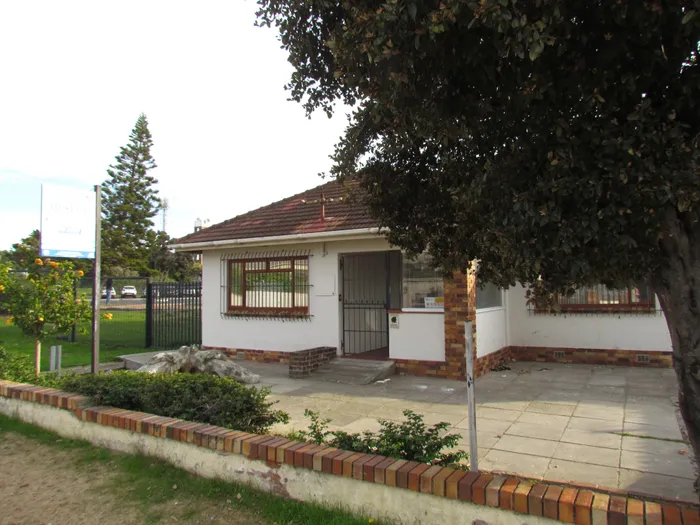A blight at the museum

The Fish Hoek Valley Museum was not included in the fencing of civic buildings three years ago.
The Fish Hoek Valley Museum is in a fight for its survival because street people sleeping on its doorstep are driving visitors away, according to the museum’s curator, Sally Britten.
At the end of May, she sounded an appeal for help on social media, warning of growing vagrancy near the museum.
When the City put up a fence around the civic centre three years ago, it drove the vagrants sleeping there to the museum’s doorstep, she said.
The museum was a City asset, but it was not included in the fencing, and the clinic next door to the museum was only partially fenced, she said.
Ms Britten said people had told her they felt unsafe walking past the museum. “So how can we expect visitors to come? The City should be protecting and securing this tourist attraction.”
Chantal Benade, who moved into a house across from the museum about one year ago, said she and her two teenage daughters had been concerned about the vagrants at the museum from the first night. They swore at each other, screamed, drank from bottles in paper bags and used intravenous drugs, she said.
“Many of these people walk up and down the avenues during the day. I’m constantly concerned for our safety.”
She has complained to the police and City law enforcement and has multiple reference numbers. “Occasionally the squatters are moved on but usually return an hour or two later,” said Ms Benade.
We contacted the Fish Hoek police by email and phone several times, but they did not respond to questions by deadline.
Meanwhile, residents and museum staff endure the smell of human faeces and urine.
“The City should protect this little gem of Fish Hoek history, but we must address the squatting issue first,” said Ms Benade.
The chairwoman of the museum board, Desire Mentor, and trustee, Bev Frieslich, who is also a committee member of the Fish Hoek Valley Historical Association, said the City had promised several months ago to fence the museum and the clinic, but so far it had not happened.
The roof over a museum storage room had to be replaced after it collapsed under the weight of vagrants climbing over it to reach the back garden, said Ms Frieslich, adding that the vagrants continued to climb over the roof and store their bedding there.
The museum staff, she said, paid for a gardener twice a month but he had to spend his time filling garbage bags with litter, human excrement and used condoms.
Ms Britten said museum staff had seen vagrants using a tree to climb over the civic centre fence, which has no spikes, to get into the car park.
Brian Youngblood, chairman of the Fish Hoek Valley Residents’ and Ratepayers’ Association (FHVRRA), said they had voiced concern to ward councillor Aimee Kuhl, in May 2019, about fencing the civic centre.
“We predicted that fencing would just displace the street-people problem from the civic centre to other parts of Fish Hoek,” he said.
On February 20, last year, (“Fencing solution raises eyebrows,” Echo, July 2, 2020), FHVRRA committee member John Shaw, who is also on the executive committee of the Fish Hoek Valley Historical Association, spoke about the incursion of street people being a major problem at the Fish Hoek museum, saying fencing was needed urgently.
Ms Kuhl said she was aware of residents’ concerns about grime and security around Central Circle.
“Due to harassment of council workers and members of the public, as well as vandalism and a break-in where PCs were stolen, property management fenced the sub-council civic amenities about three years ago,” said Ms Kuhl.
Mayoral committee member for community services and health Patricia van der Ross said three private security guards patrolled the civic centre whenever the library or hall was open at night for meetings. We asked how much that cost, but she did not respond to the question emailed to her.
She said street people were sleeping outside the fenced area and City law enforcement had had to remove them several times. “Aggressive behaviour, harassing library clients/staff and abuse of ablution facilities are often noticed and had to be dealt with by the security on site or by law enforcement,” she said.
Ms Kuhl said there were homeless shelters in Simon’s Town and Kalk Bay and U-turn, a non-profit organisation, had a centre in Muizenberg that helped street people there and in Fish Hoek.
“As seen in the recent budget, the City is expanding its safe spaces programme and social development measures to help people off the street,” said Ms Kuhl.
Ms Van der Ross said street people in the area had repeatedly refused offers of help from City social workers.
“In light of the criminal element, the team works in partnership with law enforcement and other street people organisations in the area. Shelter placement can be secured should they accept assistance.”
When we went to the area on the Saturdays of June 18 and 24 and Monday June 27 there was no sign of vagrants and the museum was closed.
Ms Kuhl and Ms Van Der Ross were asked when the fence would be extended to include the museum and clinic, but they did not respond by the time of going to print.


